A Yucatán Tale of Love Gone Wrong Adds Intrigue to Our Mexico Research
Chapter 23 : San Fran-Mexico reporter lived between two worlds, and so did we
Hola Amigos! As you’ve learned so far, our decision to move to Mexico took many twists and turns. And during the in-between times, we read about and researched our new homeland which kept restlessness at bay as we clocked into our work-a-day world, awaiting departure to our favorite place on the planet.
“Who was Alma Reed?” I asked Paul as we prepared dinner one Sunday in Half Moon Bay after arriving back from Mexico. “Have you heard of her?”
“Did she have a connection to the Yucatán?”
“I don’t know, but I found this book, Alma Reed: The Passionate Pilgrim, by Antoinette May. 1I scanned the cover and it mentioned Mexico and some romance with a governor. Sounds intriguing.”
This was another begin the beguine moment for the bookstore we would one day open in the Yucatán. Finding yet another little known gem made me want to read every book about Mexico and the Yucatán that had ever been written.
The Alma Reed book about her tragic love story with Yucatán governor Felipe Carrillo Puerto would inspire me to stock biographies in Alma Libre. But it was another book that actually led us to the Yucatán.
We found an old out-of-print title, The Lost World of Quintana Roo, by Michel Peissel, long before Alma Reed’s story. Peissel’s book set the stage for our Yucatán travel passion. His real life adventure made us want to experience our own travelers’ tales.
Later that night I read Reed’s story. She had been one of the first women reporters for Hearst’s papers in the 1920’s. As an advocate of the poor and oppressed, she assisted a Mexican family in commuting the death sentence of their son who sat on death row in San Quentin. The story was picked up by the Mexican press and due to the publicity, Mexico’s president, Alvero Obregon, invited Reed to visit Mexico as his guest.
In her southern travels, although based in Mexico City where she reported for the Hearst papers, Reed was sent to Merida, Yucatán, to meet Dr. Edward H. Thompson, one of the leading archeologists excavating Chichen Itza. (He would later be exposed by Reed for having pilfered artifacts, jewelry, and jade after dredging the cenote at the site and sending the spoils back to Boston’s Peabody Museum —but that’s an upcoming post).
During the visit, Reed met Felipe Carrillo Puerto, governor of the State of Yucatán. Although married, the charismatic Carrillo fell in love with Reed and their love story created a furor throughout Mexico and the US.
Carrillo wrote a romantic love song for her titled La Peregrina, still played by bands of serenaders today. Reed found herself fueling lines in Hearst’s papers with her own romantic love story, and in the ultimate taboo, Carrillo divorced his wife of many years to become engaged to Reed. After setting a marriage date, Reed hastened back to San Francisco to arrange a high profile engagement party and to wrap up her affairs before her permanent move to Mexico.
Shortly after her departure, the President of Mexico detained, then imprisoned Carrillo for his controversial views on how to handle a resurfacing Maya insurgency. Yucatecan land owners had developed an indentured servant status for Maya workers who were treated as slaves. Carrillo, aiming to correct this injustice, set up vast social reforms for the Maya, including establishing the ejido (land grant) and translating the constitution into Mayan.
But there would be no storybook ending to this very public love affair. Before Reed could return to be at her fiancé’s side, he was shot before a firing squad in the Yucatán, dying a martyr’s death. To honor the slain governor, the Quintana Roo pueblo formerly known as Chan Santa Cruz renamed itself Felipe Carrillo Puerto.
“Well, Paul,” I said as I finished the star-crossed love affair, “our new country has plenty of history, not to mention drama and romance. It would be fun to have a bookstore in our little town. I’d have so many books about Mexico and the Yucatán.”
“Whatever you want,” Paul mumbled. He was on his way to dream land, and so was I. But my dream was of the waking variety.
And so began my infatuation with owning a bookstore in the Yucatán. We slowly began our research. I found a book on how to open a used bookstore that became our bible. Then I attended a weekend seminar of the same name at College of San Mateo. Since this was the 1990s, independent bookstores were still a force to be reckoned with and it was easy to find information about them.
In our southern travels I’d notice the complete lack of bookstores anywhere in Mexico—in Spanish or English. Years earlier, finding myself without a book on Isla Mujeres, I’d searched the island for a book shop. The closest I came was a sign on a locked storefront—Books for Sale, Wednesday 2 to 4 p.m.
When the proprietor opened that week I was there waiting. His inventory consisted of four pitiful boxes of worn-out paperbacks. I realized if I wanted reading material in my Mexican future, I’d best bring it myself.
We did our own grass roots research, too. Whenever we were in San Francisco, any used bookstore we came across was fair game. We’d chat up the owner and ask questions about the trade. Our education had begun.
One piece of advice our bookstore bible suggested was running a classified looking for used books. Soon after placing the ad, we received a call from a woman who’d had the same brainstorm we had—owning a bookstore. Only she decided to bail and had a cache of 2000 books.
We met her that weekend and were amazed at the number of boxes on hand. She had amassed a slew of mysteries, classic science fiction, and mixed bag of multiple genres.
We wrote a check and took as many boxes as could be squeezed into the car, promising to return soon for the balance.
Our bible detailed the number of books we’d need by genre to qualify as a bookstore, or more accurately, to look like a bookstore. For starters, we needed to search out these categories: Fiction, Mystery, Science Fiction, Spy-Adventure, Western, Romance, Anthropology-Sociology, True Crime, Classics, Hobbies and Crafts, Pets, Gardens, Art, Photography, History, Biography, Self-Help, Psychology, Metaphysics and Spirituality, Young Adults, Children, and Language.
Whew. We discussed how serious we were about opening shop. After re-assessing, we decided we were still game. Our first task was to sort our acquisition, genre by genre.
Realizing we’d need to know what we’d already collected, I asked a computer tech at work if he could create a program to input our ongoing book collection into a computerized printout. It was early 1990s; Microsoft barely existed and Windows had yet to be created, but we needed a program that allowed us to enter books by title, author and genre. We met with the techie just once to explain what we wanted and in two weeks he handed us a program.
Thus began the tedious task of inputting all books into the computer. We found this much more taxing than scouring for books at sales.
Although we initially bought books solely at garage sales, we branched out. Paul worked a four day week at his computer job and on his day off he’d hit thrift shops. When he noticed a good selection of paperbacks, he’d collect a hundred or so and approach the store manager, asking if they gave volume discounts. Nine times out of ten, the answer was yes.
His next plan was to locate Friends of Libraries and ask about sales. It was at this juncture we came in contact with that much detested animal—the book dealer. Since we were neophytes, we didn’t yet consider ourselves booksellers. We had a long way to go before we even opened our doors. For heaven’s sake, we hadn’t even identified where the store would be located.
We called Redwood City Library to ask about their upcoming sale and the manager of the Friends’ bookstore told us to bring boxes and arrive early. This we did, but we were hardly prepared for the competition.
The true book dealer is a wily creature, usually a studious-looking male, a bit disheveled, with strong elbows.
I instantly discovered this as I made for the science fiction section along with a stampede of others the first night of the Friends’ annual book sale. The building was packed to overflow and I congratulated myself on getting to the science fiction table ahead of everyone else. Having read Frank Herbert and Ray Bradbury years earlier I decided I wanted to re-acquaint myself with the genre.
As I stared into boxes filled with sci-fi titles, reading authors’ names, a dealer swooped me by elbowing his way to the front. He picked up an entire box of books, then another and another. Science fiction, I soon discovered, was a hot genre and tough to find. Sci-fi readers were collectors and rarely parted with their favorites.
I was appalled. The dealer pulled every sci-fi box out from under my nose. At 50 cents a copy he would certainly make a profit somewhere. I quickly realized I was pathetically slow and better pick up speed if I planned to compete. I had no idea until that moment what a cut-throat business we were involved in. Dealers were in for the fight!
Over the years we heard stories about dealers finding rare books at sales, sometimes worth hundreds of dollars. It could be a very lucrative trade if you had a little luck and knew what you were doing.
I meekly backed away from science fiction and dejectedly worked my way over to the cookbook section. Green Apple Books in San Francisco had told me cookbooks were always popular. I peered over the aisle and located Paul working his way through the art section, stacking large picture books, one on top of the other. At least he was having luck.
After surfing through cookbooks, I checked out travel, then metaphysics and found titles on astrology, numerology, and tarot. I perked up and waded into foreign adventures and discovered a 1930s Mexico guide book, another on the Maya, and a handful of traveler tales.
A half hour later, Paul and I merged at the checkout counter. “Did you find everything, dear?” the clerk asked. “Oh, you like Mexico?”
“Yes, very much. We built a house there and now I’m on a quest to find books about it. There are no bookstores so I’m stocking up while we’re in the US.”
“Oh, Mexico. How exciting! My husband and I lived there years ago in Puerto Vallarta. There were absolutely no bookstores at all.”
“I was hoping to get some science fiction but that guy over there,” I motioned to Mr. Elbows tallying his booty at a nearby register, “took them all.”
The cashier’s kindly face turned fierce and I thought I heard her growl as she scoffed, “Him! Goodness, he’ll be the death of me yet.”
“Who is he?”
“Oh, he’s a dealer but the worst kind. Comes into our Friends’ shop and goes through every single book on the shelf. Then he badgers me about price.”
“Well, I better confess. We’re going to open a bookstore in Mexico in a couple years, so I guess we’re dealers, too. We’re just not up to speed. I hope we don’t turn out like him.”
“Oh, I don’t think you have to worry about that. A bookstore in Mexico! What a wonderful idea. I’d love to talk more, but it’s terribly crowded.”
I had to agree. The line behind me was growing by the minute but everyone seemed intent looking over their bargains, unphased that the cashier and I were getting acquainted.
“Why don’t you come to our bookstore next Saturday. If I find books on Mexico, and metaphysical, too, I’ll put them aside for you. We get quite a few donations in that genre.”
“How nice. We’ll do that. I’m Jeanine and this is Paul.”
“I’m Sarah, the manager. You come see me. We’ll make sure you get your fill of Mexico before you leave California. Oh, one last thing. What’s the name of your bookstore?”
“Alma Libre Libros. Free Spirit Books.”
Sarah was as good as her word. With her help I gathered a unique assortment of books on Mexico. It seemed I was slowly becoming a serious collector.
I was becoming a passionate pilgrim.
Antoinette May. Passionate Pilgrim: The Extraordinary Life of Alma Reed. (De Capo Press, December 1994).
If you’re interested in supporting well-researched and thoughtful writing and you’ve been enjoying my posts and are in the mood to be generous, your paid subscription would make my day. Keep up to date on Mexico, travel, chapters from Where the Sky is Born—how we bought land and built a house on the Mexico Caribbean coast. And opened a bookstore, too! All for $5/monthly or $50 per year.
Hit the heart at the top of this email to make it easier for others to find this publication and make me very happy.
Backstory—Puerto Morelos sits within 100 miles of four major pyramid sites: Chichen Itza, Coba, Tulum and Ek Balam. By living in close proximity to this Maya wonderland we pyramid hopped on our days off from Alma Libre Libros, the bookstore we founded in 1997. Owning a bookstore made it easy to order every possible book I could find on the Maya and their culture, the pyramids, the archeologists who dug at these sites and the scholars who wrote about them, not to mention meeting archeologists, tour guides, and local Maya who popped into the store. I became a self-taught Mayaphile and eventually website publishers, Mexican newspapers and magazines, even guidebooks asked me to write for them about the Maya and Mexico. I’ll never stop being enthralled by the culture and history and glad there’s always new news emerging for me to report on right here in Mexico Soul. Please share this post if you know others interested in the Maya. Thank you!

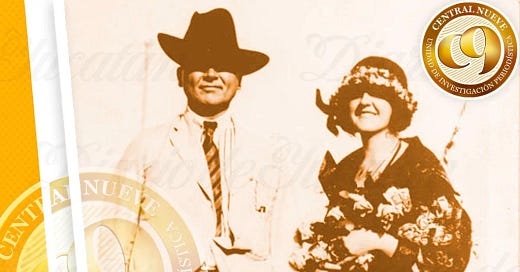



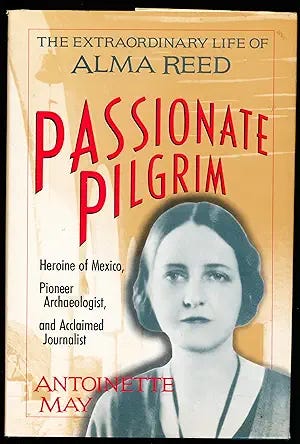
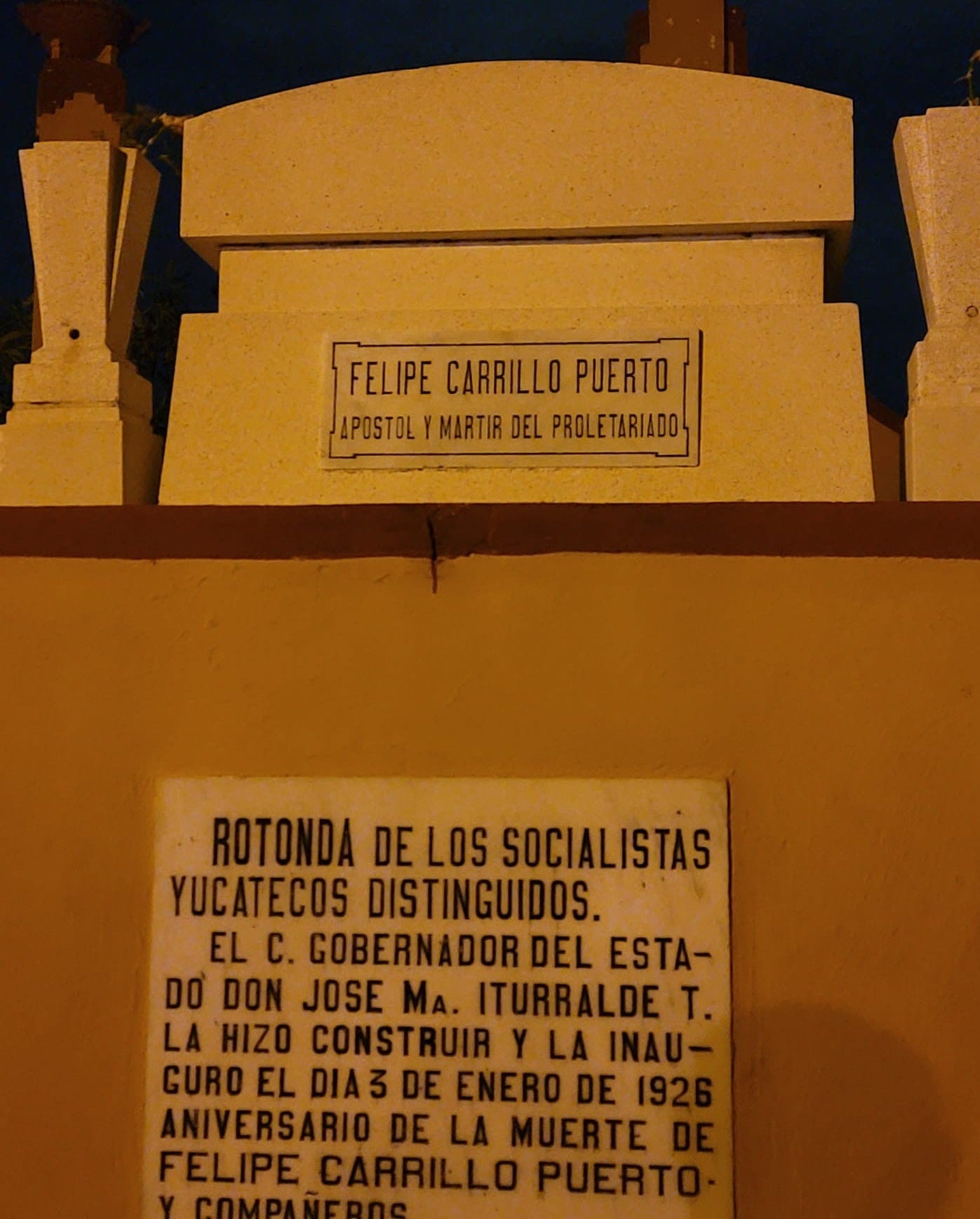
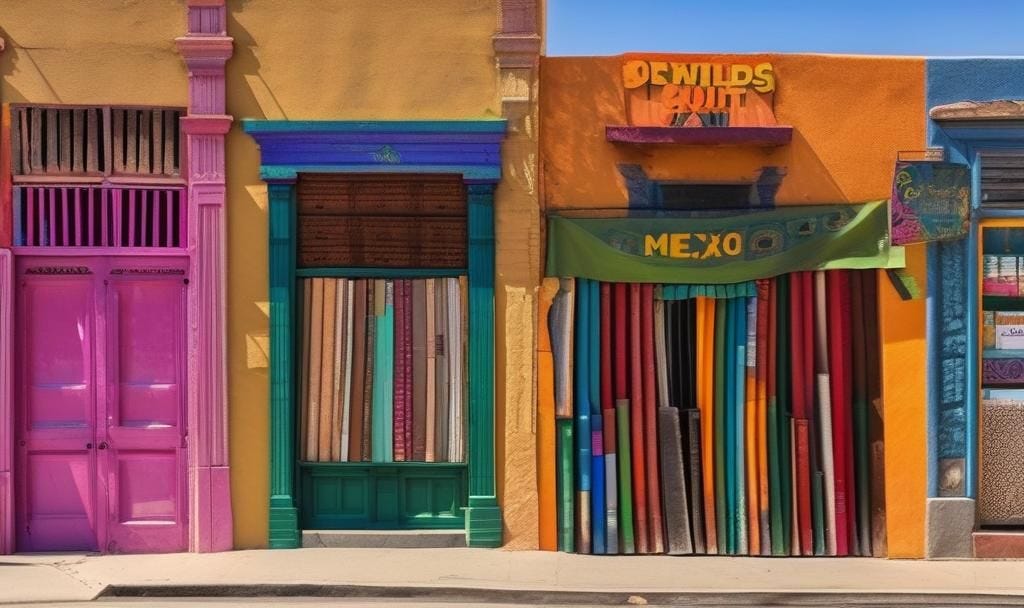
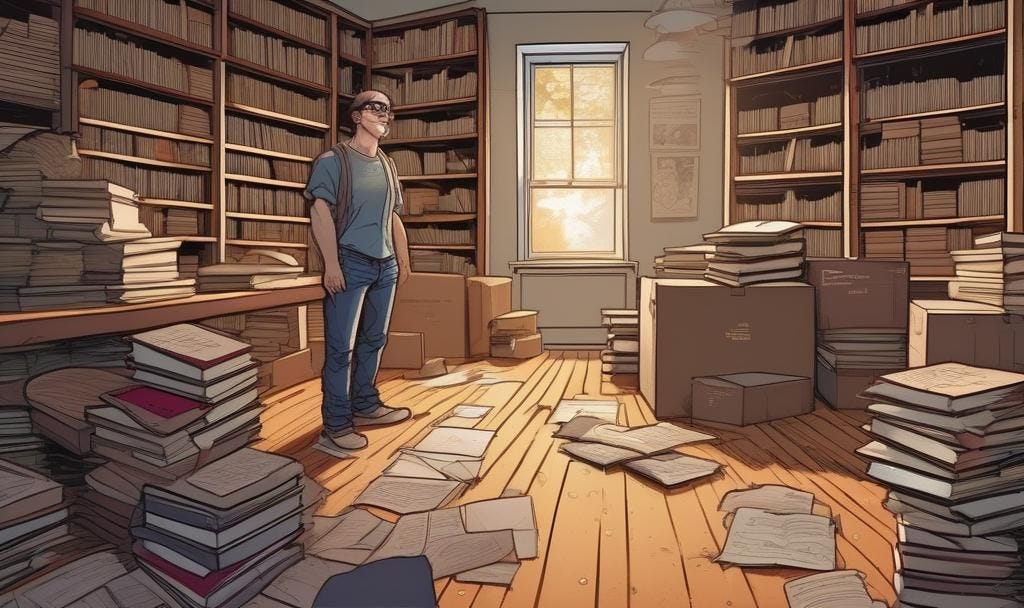


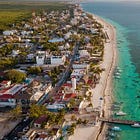
Here’s what I found out about books as an American living in Mexico. In the early years, when I had to bring back all my English reading material, I learned that books are cheap but heavy. I used to stuff as many as possible into my carry-on. Nowadays, I’m picky about books I bring back since luggage requirements are much more limited. But we are blessed with a very good English lending library in Patzcuaro (30 minute drive )that is well stocked!
Thanks to you, I know the story of Alma Reed, good storytelling mixed with some humour, and a strong love for books and Mexico. Thanks, Jeanine.